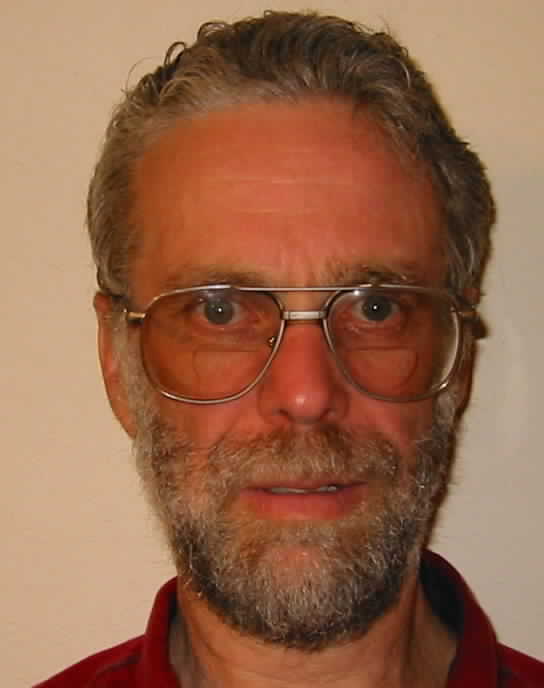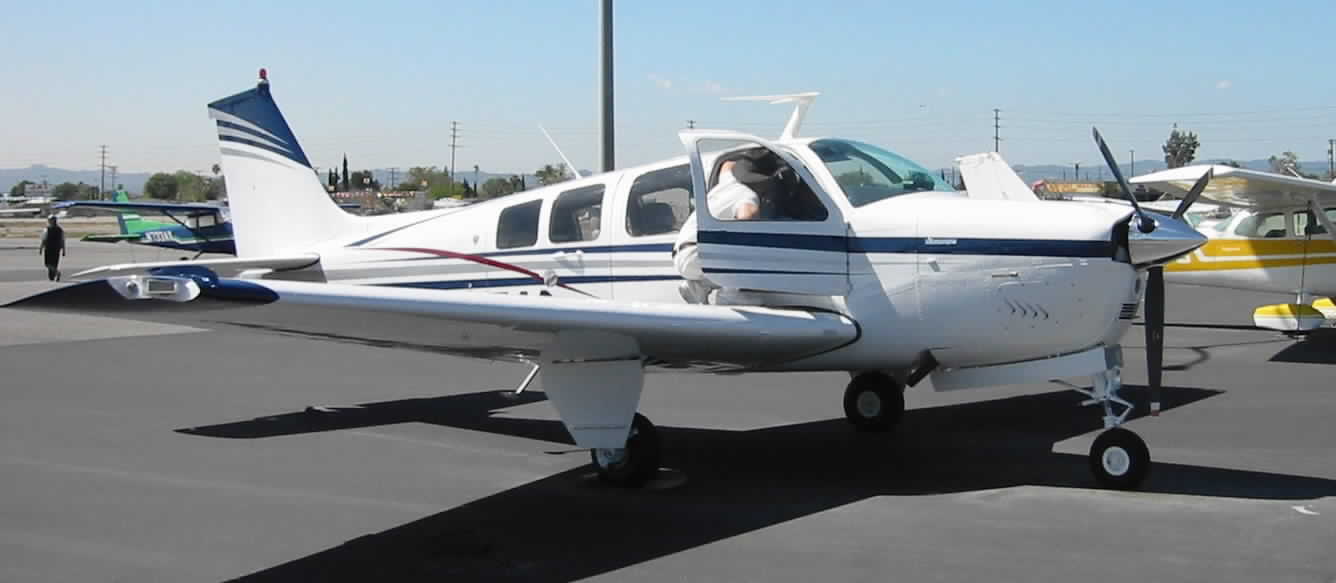Beech
Bonanza 33/35/36 Recurrent Training Weekend
Bonanza TrainingBonanza Simulator
Lee Elson CFII and Flight Level Aviation
are happy to announce a joint Bonanza 33/35/36 training program
designed to take you beyond just the normal procedures found in your
Bonanza.
Our past Bonanza Weekends were
very successful (click
here for feedback).
Send an email by clicking here if you would like to notified when we
schedule new Bonanza Weekends.
Click here to read a recent article in ABS Magzine about Bonanza
Weekend.
The two day program will consist of time in Flight Level
Aviation's full motion flight simulator as well flight training in your
own Bonanza. The full motion simulator is a 6-degree freedom of
motion high performance piston airplane simulator located at Greene
County Airport in Waynesburg, PA (KWAY). Training will
be conducted 8AM to 5PM each day
with 4 pilots and 2 instructors. The pilots will train in pairs,
alternating between flying and observing and alternating between flight
instruction with Lee Elson and simulator training with an experienced
simulator instructor. Additionally Lee will conduct ground school
in a group setting with all 4 pilots on topics specific to safely
flying and economically owning a Bonanza.
If weather does not permit
sufficient flight time in the airplane, additional simulator time and
ground school will be provided.
Flight training will be
conducted out of KWAY. If weather conditions are not VFR (KWAY does not
have an instrument approach as of yet), KMGW can be used as an
alternate location for arrival and flight training. KMGW is just a 30
minute drive from KWAY.
All Bonanza flight training will be conducted by Lee Elson, an
experienced CFII and Bonanza owner, using a Bonanza Training Checklist
which he developed.
This two-day program must be scheduled in advance. Send an e-mail to rkaplan@flyimc.com if you have
any questions about this new program or would like to set up a training
schedule.
The cost of this unique program is $795 and includes simulator,
ground and flight training from 8AM to 5PM on both days of the program (Sat-Sun,
Mon-Tues, or Wed-Thurs). Flight
Level Aviation provides a training experience which is customized to
each pilot and type-specific for the Bonanza. Bonanza recurrent
training involves a combination of simulator-based and airplane-based
training.
The program price does not include food, lodging, car rental
or parking/landing fees. Two to four students will be accommodated
during this two-day program.
IMPORTANT: We realize that flight instruction in Bonanzas with a single
yoke presents a flight safety issue which is particularly important to
consider. Therefore, pilots who wish to receive instruction in an
airplane equipped with only a single yoke must be qualified and
proficient to act as pilot-in-command of their airplane. Pilots who are
qualified and proficient to fly under VFR but not IFR may schedule the
simulator portion of the weekend before the airplane portion since an
instrument proficiency check may be conducted entirely in the simulator.
Lee does possess an FAA exemption permitting him to instruct in a
single-yoke Bonanza if both Lee and the student are qualified to act as
PIC.
Also for each airplane in which Lee Elson CFII will instruct students,
it is necessary for the airplane owner to provide a certificate of
insurance listing Lee as an Approved Pilot with a Waiver of Subrogation.
This is necessary even in those cases where Lee will instruct with the
airplane owner acting as pilot-in-command.
About
Lee Elson CFII/PhD
 Lee
Elson began flying in 1981. He moved through the usual Cessna and Piper
trainers and low performance models before discovering, in 1987, that a
Beech Bonanza offered the right combination of speed and comfort for
his family. In that year, he and his instrument rated wife bought into
an A36 that they still own and fly today. As of 2004, more than 1300 of
his 2400 hours are in the Bonanza with many of those hours spent on
trips between his base in the Los Angeles area and a family vacation
cabin in northern Vermont. Lee takes an active role in the maintenance
and refurbishment of their A36 and has acquired an extensive set of
resources of value to the Bonanza owner/operator/pilot.
Lee
Elson began flying in 1981. He moved through the usual Cessna and Piper
trainers and low performance models before discovering, in 1987, that a
Beech Bonanza offered the right combination of speed and comfort for
his family. In that year, he and his instrument rated wife bought into
an A36 that they still own and fly today. As of 2004, more than 1300 of
his 2400 hours are in the Bonanza with many of those hours spent on
trips between his base in the Los Angeles area and a family vacation
cabin in northern Vermont. Lee takes an active role in the maintenance
and refurbishment of their A36 and has acquired an extensive set of
resources of value to the Bonanza owner/operator/pilot.

In 1998, Lee became a flight instructor and, since then, has
participated in a variety of training activities on a regular basis.
These activities range from instructing primary students in trainers,
to instrument and CFI candidates in high performance aircraft, to
organizing and teaching ground school classes. As of 2004, he has
accumulated more than 600 hours of dual given and he has a 100% success
rate for first time practical test takers that he has trained.
Lee has been educated in the
physical sciences, having earned a master's degree in physics and a PhD
in atmospheric sciences. As both a pilot and an atmospheric researcher
for many years, his knowledge of weather is both practical and
professional. Combined with an extensive knowledge of the Web, he is
able to provide trainees with a valuable set of weather resources.
Bonanza 33/35/36 Training Syllabus
Flight Level Aviation is
uniquely able to offer a thorough Bonanza 33/35/36-specific checkout
that includes:
- In-flight training by a
CFII who actively owns/flies his own A36 and is also a trained
atmospheric scientist who understands weather
- Simulator-based training
using a full-motion simulator with a high performance single-engine
flight model
The training weekend will include a review of the accident
and incident history of various Bonanza models, with special attention
to specific features of these aircraft which have established trends in
prior accident evaluations. The goal is an understanding of the
failure modes, handling quirks, and operating peculiarities specific to
the model Bonanza flown by each pilot. Training will then include
items selected from the Bonanza Training Syllabus based upon the
particular skills and interests of each pilot.
Bonanza 33/35/36 Training Checklist
All Bonanza training will be both individualized
according to a given pilot’s need and will include elements selected by
the pilots and instructor based upon the following options:
- Review of Bonanza 33/35/36
accident history, with special attention to specific features of this
aircraft (for example: tail flutter, non-standard gear handle
position in early models, fuel mismanagement-management) that have
established
trends in prior
accident evaluations.
- Preflight inspection of
critical items that are not safety wired (e.g. right main gear door
mechanism, tachometer cable, alternator capacitor, mixture control
assembly at throttle)
- Usable fuel versus fuel
tank capacity
- How much oil is too much?
How much is too little?
- Emergency procedures for
vapor lock (fuel pump on, switch tanks)
- Proper operation of
electric fuel (boost) pump on low and high settings
- Proper techniques for
switching tanks
- Full throttle activates
high setting of engine driven fuel pump (important if engine failure
occurs on
takeoff)
- Procedures to use if door
opens in
flight
- Special preflight items
including rudder brackets, control cables visible in wheel well, proper
seating of fuel caps
- Proper tire inflation
- Hot start procedures that
work
- Location of nosewheel
mechanical indicator (some models)
- Location of spare
alternator fuses and circuit breakers
- Preflight inspection of
propeller spinner and propeller blades
- Emphasize proper leaning
and cylinder temperature monitoring procedures
- Limiting factor for summer
climbs = Cylinder head temps
- How to interpret engine
analyzer data (e.g. troubleshooting)
- Emergency gear extension
procedure
- How to check your shimmy
dampener
- Go-Around procedure (timing
of gear up?, not specified in POH)
- Switching fuel tanks
consistently enroute
- *** Electric Trim = Most
Dangerous part of aircraft *** Runaway trim can be
unrecoverable if undetected. Extreme control forces can occur by
attempting to manually control pitch when autopilot is engaged. Need to
memorize location of electric trim circuit breaker
- Maximum altitude loss
during autopilot malfunction:Implications for
autopilot-coupled approaches
- Need for autopilot
disengage check as part of pre-flight/runup
- Need to memorize location
of gear motor circuit breaker in event motor stays on after takeoff
- Procedures to verify
gear-down (gear-down light/switch bulbs, mechanical indicator, audible
warning/retard throttle)
- Procedures for landing
gear-up if necessary
- Potential high sink-rate on
final with no power vs. long rollout if final flown with power on
- Operating lean of peak vs.
rich of peak?, GAMIjectors?
- Cowl flap operation (keep
open in summer esp. if digital engine probe not available?)
- *** Accident History: Dual
vacuum pumps and/or dual vacuum/electric attitude
indicators seem essential
- Max Takeoff Weight vs. Max
Landing Weight
- Takeoff C.G. vs. landing
C.G. (some models)
- Critical circuit breakers –
Gear motor, electric trim, autopilot
- Methods to deactivate
autopilot (intentionally and unintentionally)
- Never manually overpower
autopilot in pitch!
- Note and observe altitude
guideline for maximum altitude loss if autopilot malfunctions
- Autopilot preflight
techniques (multiple axis)
- Max gear operating
speed
- Max gear-down speed
(facilitates emergency descent esp. if there is fire)
- Recommendations for use of
flaps to improve short/soft field takeoff performance (not specified in POH)
- Timing of gear-up decision
and related safety factors
- Location and use of
alternate static
source
- Location and use of
firewall air shutoff
- Location and use of
alternate (engine intake) air "T" handle
- Location of fuel vents
(check during preflight)
- Caution against ground
operation with significant power esp. in vicinity of stones
- Caution high power or
taxiing over stones/gravel/soft fields during ground operations
- Continental Top Care
program
for engine trend monitoring
- Importance of engine
baffling/oil cooler to engine life
- Alternate points of view
re: leaning engine on ground
- Consider 2 weight/balance
lists for some models (with 5th/6th seat(s) installed vs. removed)
- Need to include fuel flow in scan on
takeoff run, proper understanding of what is being measured (fuel
pressure, not flow) on factory gauge, implications on engine operation
and pilot
reactions to low vs. high fuel flow
- Failure modes with dual vacuum pump,
including need to inspect/replace vacuum filters periodically